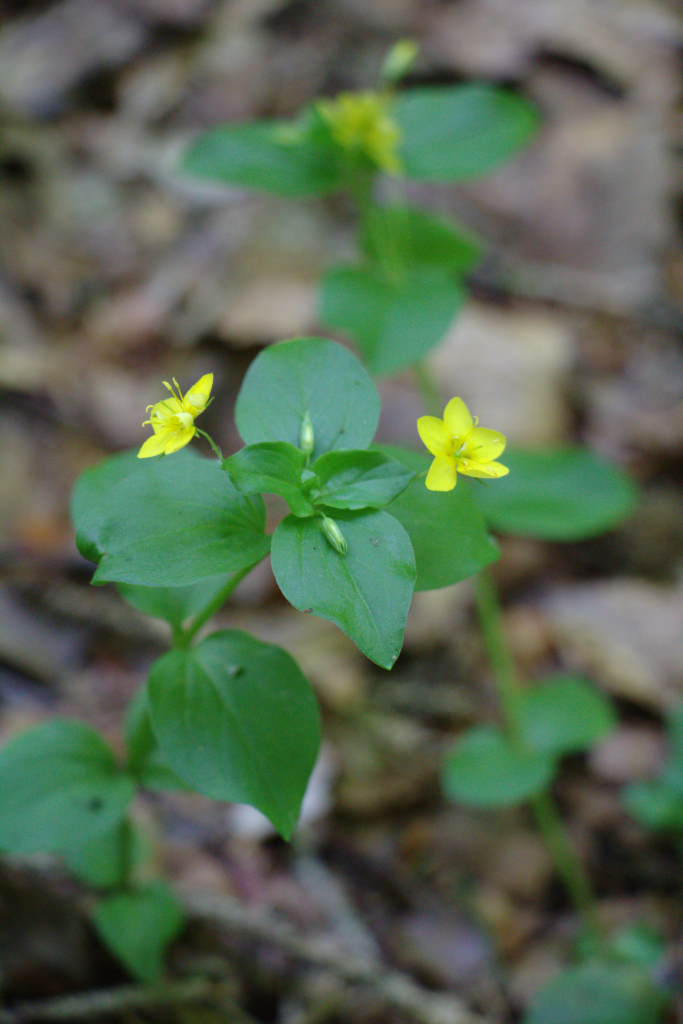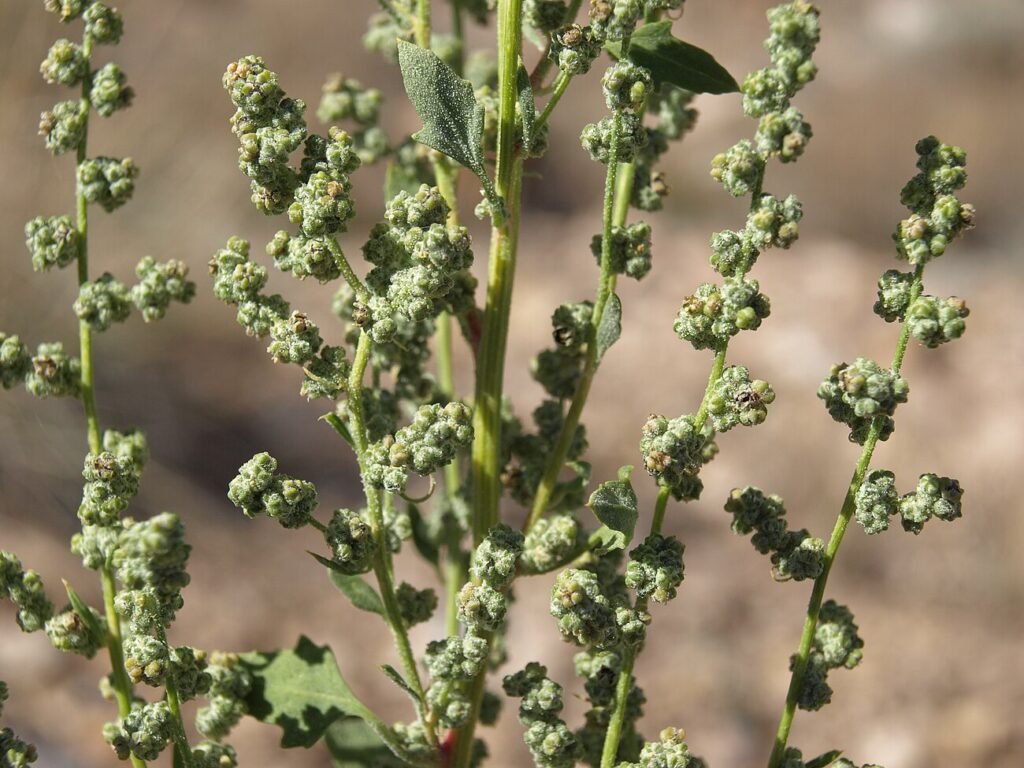Exploring Yellow Pimpernel, Moneywort
Scientifically recognized as Lysimachia nemorum and classified under Family Primulaceae, stands out as a distinctive Herbaceous perennial known for its unique characteristics. While it may also be found under other Synonyms, Lysimachia vulgaris, Lysimachia thyrsiflora.withNot typically cultivated form. You can use our free plant care app PlantPlants to identify Yellow Pimpernel, Moneywort.
Temperature
Min 15 F (-9 C), Max 90 F (32 C)
Watering
Moderate water needs; prefers consistent moisture
Fertilizing
Balanced, all-purpose fertilizer
Sunlight
Partial shade to full sun
Toxicity
Non-toxic



Appearance and Growth Of Yellow Pimpernel, Moneywort
At maturity, this species reaches approximately 12-24 inches tall, presenting Opposite, lance-shaped, glossy green leaves along with Small, yellow, cup-shaped flowers that bloom in clusters, followed by Capsule containing seeds. These features are supported by a reliable Fibrous root system, ensuring stability and sustained growth.
Yellow Pimpernel, Moneywort Origin and Habitat
Native to North America, Europe, and parts of Asia, Yellow Pimpernel, Moneywort thrives in Moist woodlands, meadows, and along stream banks at elevations around Sea level to 1,500 meters. Best suited for USDA Hardiness Zone Zones 4 to 8. Whether grown indoor, in a curated garden or a more natural setting, its ecological requirements help maintain its vigor over time.



How to take Care of Yellow Pimpernel, Moneywort
Light, Soil and Watering Yellow Pimpernel, Moneywort.
You can use our free plant identify app PlantPlants to chose the best spot for Yellow Pimpernel, Moneywort, This plant prefers Partial shade to full sun and flourishes in Well-draining, loamy or sandy soil with a soil pH of about 6.0 to 7.0.
Yellow Pimpernel, Moneywort needs watering,Moderate water needs; prefers consistent moisture, guided by PlantPlants app, You can get plants daily watering schedule. to maintain Moist to wet, ensure steady hydration. Applying water through Soak the soil thoroughly; avoid waterlogging supports even distribution and helps prevent overwatering or dryness.
Temperature and Humidity
Yellow Pimpernel, Moneywort performs best within 20 F to 85 F (-6 C to 29 C). Its ideal growth occurs at around 65 F to 75 F (18 C to 24 C), though it tolerates ranges from Min 15 F (-9 C), Max 90 F (32 C). Additionally, maintaining Average humidity; thrives in moderately humid environments encourages healthy foliage and overall plant vigor.
Fertilization & Soil Health
Feeding with Balanced, all-purpose fertilizer at the recommended Seasonal Application Frequency on PlantPlants App keeps nutrients balanced. Incorporating Compost or well-rotted manure enhances soil structure and fertility, while staying alert to Yellowing of leaves, stunted growth helps you adjust care as needed to maintain optimal plant health.
Routine and Maintenance
Regular attention ensures this plant’s beauty and longevity. Late winter or early spring for Cut back dead growth to encourage new growth tidies its appearance, while Every 2-3 years if growing in pots may be necessary as it grows, requiring a 1-2 inches in diameter increase and a fresh Peat-based potting mix with added perlite for drainage. for Staking or Support. Generally does not require staking.
Seasonal Changes and Propagation of Yellow Pimpernel, Moneywort
During Winter months, growth may slow and some Foliage may turn yellowish and die back in fall can occur. For those looking to propagate, consider Division, seed propagation and provide Requires stratification; sow seeds in spring when starting from seed. If using cuttings, follow Take cuttings in early summer; place in moist potting mix to ensure successful rooting and healthy new plants.
Pests, Diseases and Prevention
our free plant identify and care app PlantPlants can help you diagnosisYellow Pimpernel, Moneywort problems.Though generally robust, keep watch for Aphids, slugs and remain vigilant against Root rot, powdery mildew. Implementing Good air circulation, proper spacing and applying Neem oil for pests; improve drainage for root rot when issues arise will help sustain the plant thriving.
Companions and Uses of Yellow Pimpernel, Moneywort
This plant pairs nicely with Hostas, ferns, and other shade-living plants and shows None significantly noted, making it a flexible choice for various Ground cover, woodland gardens, border plant.
Edible and Cultural Aspects
the Edible Parts: Leaves and flowers can be consumed. Toxicty of Yellow Pimpernel, Moneywort, Non-toxic. learning about its Harvest leaves and flowers in spring, Used in salads or as a garnish, and Low in calories, contains vitamins and minerals can be intriguing for culinary explorers. Some traditions highlight its Traditionally used to treat various ailments; not widely researched or note its Valued in traditional medicine in some cultures.
Conservation and Status
With an Not listed; currently not at risk, proper Preserving native habitats
Frequently Asked Questions
1. Is Yellow Pimpernel drought-tolerant?
No, it prefers moist conditions and does not tolerate drought well.
2. Can it grow in full sun?
Yes, but it thrives best in partial shade.
3. How do I start seeds indoors?
Sow seeds in a moist potting mix and provide stratification by refrigerating for a few weeks.
4. How often should I water it in summer?
Water approximately every 5-7 days, ensuring the soil remains moist.
5. Is it safe for pets?
Yes, it is considered non-toxic to pets.
6. What should I do if I notice pests?
Use neem oil as a treatment and improve air circulation around the plant.
7. When should I prune my Yellow Pimpernel?
Prune in late winter or early spring before new growth begins.
8. Can it be grown in containers?
Yes, it can be grown in pots; ensure adequate drainage.
9. How does humidity affect growth?
Moderate humidity is ideal; too dry may hinder growth.
10. What are the best companion plants?
Hostas and ferns are excellent companions in shaded areas.


